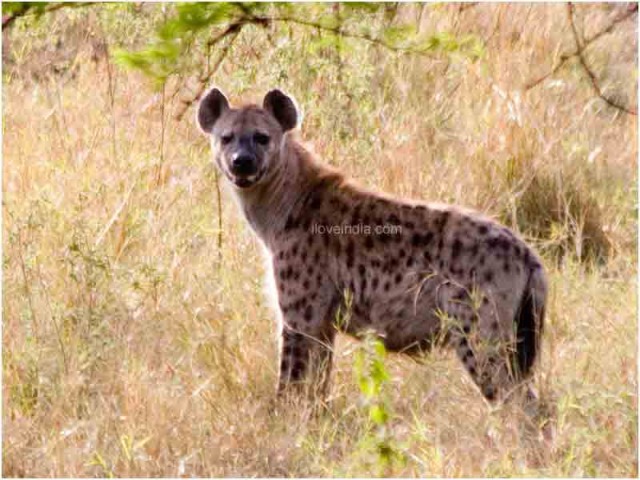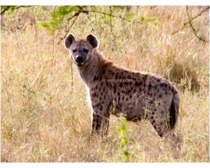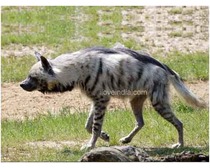Hyenas are the natives of African and Asian continent, which survive through scavenging & hunting. Explore the article to find some interesting facts and amazing information on hyenas.
Facts About Hyena
Hyenas are natives of African and Asian continent and are the most common large-sized carnivore found in Africa. In the ancient Egypt, hyenas used to be domesticated and eaten, and humans and hyenas have been mutual predators in Asia and Europe since long. While hyenas have a reputation of being timorous and cowardly, it has also been observed that at times, they can become dangerous and bold and attacks humans and animals. Even as they are known to be scavengers, only 5-10% of their meals come from scavenging and can eat around 3-6 kg of meat daily. Hyenas often hunt for food, which is in stark contrast to their timid disposition. Lions and hunting dogs prey on hyenas. The Spotted Hyena has been declared by the ‘International Union for Conservation of Nature (IUCN)’ as 'conservation dependent'. Read on to explore some of the most interesting and amazing information on hyenas.

Fast Facts About Hyena
Kingdom: Animalia
Phylum: Chordata
Class: Mammalia
Order: Carnivora
Family: Hyaenidae
Height: 28-35 inches
Weight: 90 to 190 pounds
Life Span: 25 years (in captivity)
Diet: Fresh Meat and Scavenged Meat
Habitat: Savannas, Grasslands, Woodlands
Age of Sexual Maturity: 3 years
Gestation Period: 90-110 days
Interesting & Amazing Information On Hyenas
- It is believed that hyenas originated some 26 million years ago from arboreal ancestors. These ancestors bore similarity to the modern Banded Palm Civet. One of the most primitive hyenas, Plioviverrops was a lithe civet-like creature that lived in Eurasia about 20-22 million years.
- The physical appearance of hyenas bears resemblance to canids, but they are a separate biological family, closely related to Herpestidae (the family of mongooses and meerkats). Their front legs are longer than the back legs, which imparts them a distinct bear-like gait.
- Three hyena species are found in Africa. Spotted hyena and striped hyena are seen in east Africa. The hyenas found in southern Africa are smaller in size and shyer than the ones seen in the east. The female spotted hyenas are physically dominant over the males and outweigh them by a complete 3 pounds.
- Spotted hyenas organize themselves into territorial clans of related animals, in order to defend their homes from intruding clans. The cubs are raised in the den, which is the center of clan activity. The dens are situated on high grounds, which are connected to a series of under-ground tunnels through their elevated entrances.
- Barring the aardwolf species of Hyena, all other species are hunters and scavengers. Their jaws are extremely strong as compared to their body size and their digestive system is very powerful, which helps them capably eat and digest their prey, with its skin, teeth, horns and bones.
- Hyenas are not known to follow a great hunting technique. They hunt in packs and usually tire their prey to exhaustion. Then, they attack the prey and start tearing its chunks even before it dies.
- There are many negative associations with Hyenas in some cultures, due to their tendency to scavenge graves for food. Precisely for this reason, they are associated with lack of hygiene, cowardice and being gluttons.
- The female hyenas do not mate with the members of their clan; rather take any other wandering male hyena for mating. They usually give birth to up to four cubs.
- Hyenas can survive several days without water and can travel long distances.
- In the Middle Eastern folklore and literature, the striped hyenas are often depicted as symbols of treachery and stupidity. In East Africa, in Tabwa mythology the spotted hyena are depicted as a solar animal which brought the sun to warm the cold earth, on the other hand in West African folklore hyena stands as a symbol of immorality, abnormal activities and bad habits. In Tanzania, it is believed that spotted hyenas serve as mounts for the witches
- The presence of human hair in fossilized hyena dung which is around 195,000 to 257,000 years old suggests that hyenas used to prey on humans as well.


See also
More from iloveindia.com
- Home Remedies | Ayurveda | Vastu | Yoga | Feng Shui | Tattoos | Fitness | Garden | Nutrition | Parenting | Bikes | Cars | Baby Care | Indian Weddings | Festivals | Party ideas | Horoscope 2015 | Pets | Finance | Figures of Speech | Hotels in India : Delhi | Hyderabad | Chennai | Mumbai | Kolkata | Bangalore | Ahmedabad | Jaipur
- Contact Us Careers Disclaimer Privacy Policy Advertise With Us Lifestyle Sitemap Copyright iloveindia.com. All Rights Reserved.




